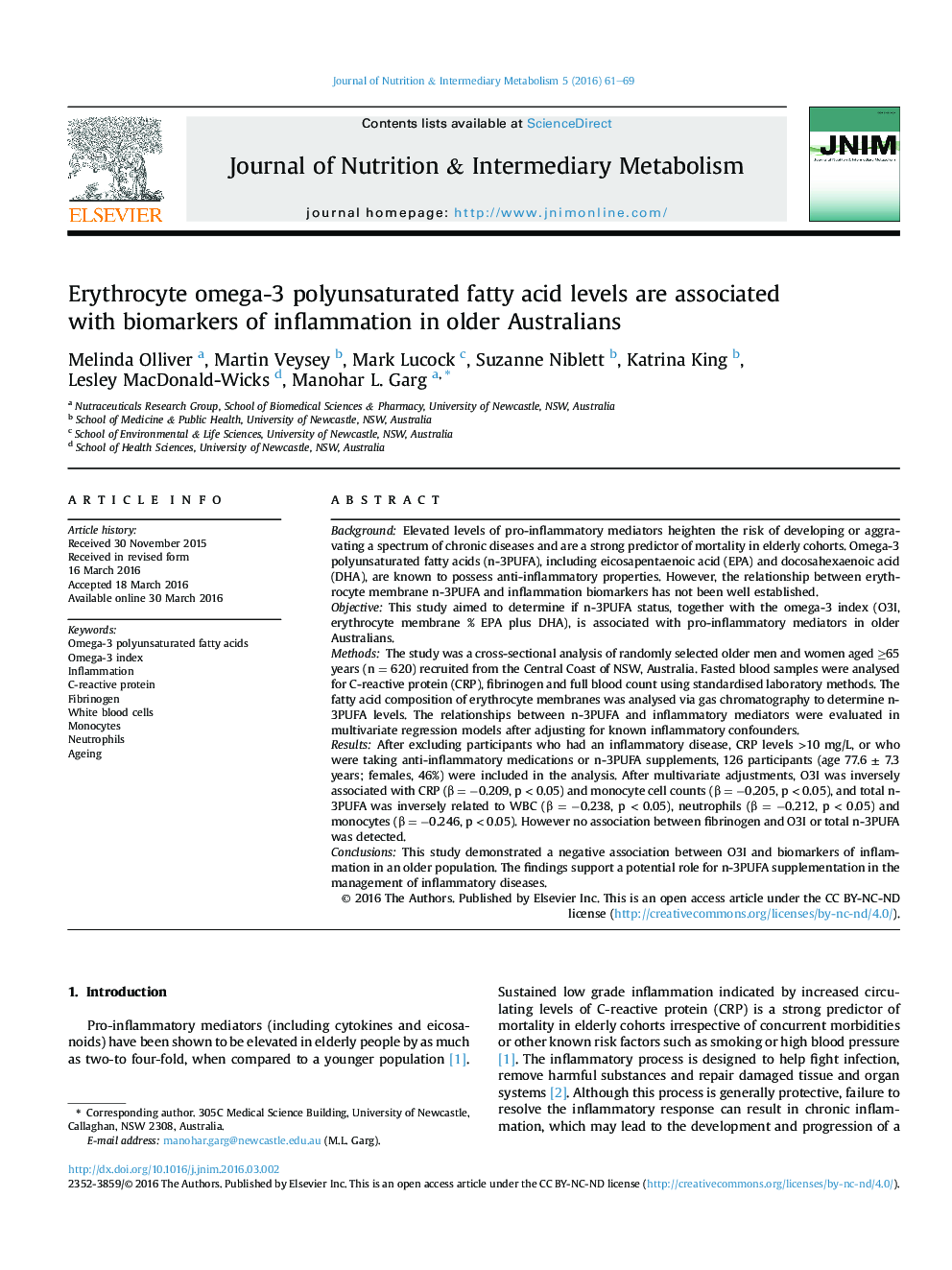| کد مقاله | کد نشریه | سال انتشار | مقاله انگلیسی | نسخه تمام متن |
|---|---|---|---|---|
| 2688634 | 1564819 | 2016 | 9 صفحه PDF | دانلود رایگان |
• Study results suggest a negative association between the omega-3 index and inflammation in older people.
• Results warrant future longer-term intervention trials to examine the role of increased intake of omega-3 fatty acids in reducing inflammation in older people for the prevention of non-communicable diseases.
BackgroundElevated levels of pro-inflammatory mediators heighten the risk of developing or aggravating a spectrum of chronic diseases and are a strong predictor of mortality in elderly cohorts. Omega-3 polyunsaturated fatty acids (n-3PUFA), including eicosapentaenoic acid (EPA) and docosahexaenoic acid (DHA), are known to possess anti-inflammatory properties. However, the relationship between erythrocyte membrane n-3PUFA and inflammation biomarkers has not been well established.ObjectiveThis study aimed to determine if n-3PUFA status, together with the omega-3 index (O3I, erythrocyte membrane % EPA plus DHA), is associated with pro-inflammatory mediators in older Australians.MethodsThe study was a cross-sectional analysis of randomly selected older men and women aged ≥65 years (n = 620) recruited from the Central Coast of NSW, Australia. Fasted blood samples were analysed for C-reactive protein (CRP), fibrinogen and full blood count using standardised laboratory methods. The fatty acid composition of erythrocyte membranes was analysed via gas chromatography to determine n-3PUFA levels. The relationships between n-3PUFA and inflammatory mediators were evaluated in multivariate regression models after adjusting for known inflammatory confounders.ResultsAfter excluding participants who had an inflammatory disease, CRP levels >10 mg/L, or who were taking anti-inflammatory medications or n-3PUFA supplements, 126 participants (age 77.6 ± 7.3 years; females, 46%) were included in the analysis. After multivariate adjustments, O3I was inversely associated with CRP (β = −0.209, p < 0.05) and monocyte cell counts (β = −0.205, p < 0.05), and total n-3PUFA was inversely related to WBC (β = −0.238, p < 0.05), neutrophils (β = −0.212, p < 0.05) and monocytes (β = −0.246, p < 0.05). However no association between fibrinogen and O3I or total n-3PUFA was detected.ConclusionsThis study demonstrated a negative association between O3I and biomarkers of inflammation in an older population. The findings support a potential role for n-3PUFA supplementation in the management of inflammatory diseases.
Journal: Journal of Nutrition & Intermediary Metabolism - Volume 5, September 2016, Pages 61–69
